
As you could see in my last post, 포대기 is the traditional way of carrying baby. There are a variety of styles nowadays, and perhaps originally they just used a big rectangle of fabric, but the basic 포대기 is a big, thick rectangular blanket, usually with a folded down top edge and a long strap attached to each side near the top. They come in different widths and lengths. The one I use, a gift from my lovely Mother in law, is of the wider and longer variety.
Generally you would start to use a 포대기 from the time baby has gained reasonable neck control (approximately 100 days/3 months) I saw a woman in the DPRK’s 1972 film, 꽃파는 처녀 using a 포대기 a bit like a sling but she seems to be providing head support with her hand as you can see in this screen capture:
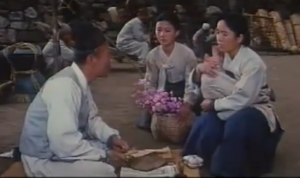 If you are going to use 포대기, apply the same care and commonsense as when using any other baby carrier or mobility device. I am not an expert on infant physiology and don’t want any harm to come to your child. I’ve also read a few people’s accounts of becoming bow legged from being carried excessively in a 포대기 as an infant. I don’t know whether studies have been done on this, but again, use it carefully and in moderation.
If you are going to use 포대기, apply the same care and commonsense as when using any other baby carrier or mobility device. I am not an expert on infant physiology and don’t want any harm to come to your child. I’ve also read a few people’s accounts of becoming bow legged from being carried excessively in a 포대기 as an infant. I don’t know whether studies have been done on this, but again, use it carefully and in moderation.
I didn’t use the 포대기 much when Alice was small since it took me a while to become confident tying it by myself, and I often didn’t have someone around to help me tie it. Now she is older (17 months) she much prefers 포대기 to the Ergo Performance carrier we used to use, and happily climbs onto my back for a walk to the shops. Since she is heavier, I actually find 포대기 much more comfortable and easier on my shoulders and back, than the Ergo.
Some Korean mums just use 포대기 at home, to lull baby to sleep. I use it as a general carrier.
How to tie the 포대기:
1. Start with a piggy back! I grasp Alice around the chest, under her armpits and swing her over my shoulder (need strong arms for this) Sometimes I sit on the edge of a bed and call out “어부바!” which is a baby word for giving a piggy back (from 업다) and she climbs onto my back.
A smaller baby should be in a sort of crawling position, with their legs bent and thighs under their body, a larger baby should also have legs bent comfortably, avoid wrapping baby’s legs around your waist, Alice seems to know what is comfortable and naturally assumes the right position.
2. bring the 포대기 up over baby’s shoulders, grasping the top corners of the blanket, where the straps start, and gently pulling forward so baby is held in firmly. Keeping the whole thing tight is essential to carrying baby securely.
3. Bring one side of the blanket across your chest, the strap should go over the other side of the blanket. Hold it their firmly as you bring the other side across to overlap. Again, check that it is tight across baby’s shoulders.
4. Each strap wraps back around baby. they should cross each other under baby’s bottom, creating a sling seat.
5. After crossing over, pull the straps back to the front of your body, pulling firmly, but being mindful of baby’s leg position. Tie securely at the front.
6. Check that everything is secure and the straps are holding baby firmly under the bottom. You’re ready to go!
I will discuss some alternative 포대기 carrying styles in upcoming posts.



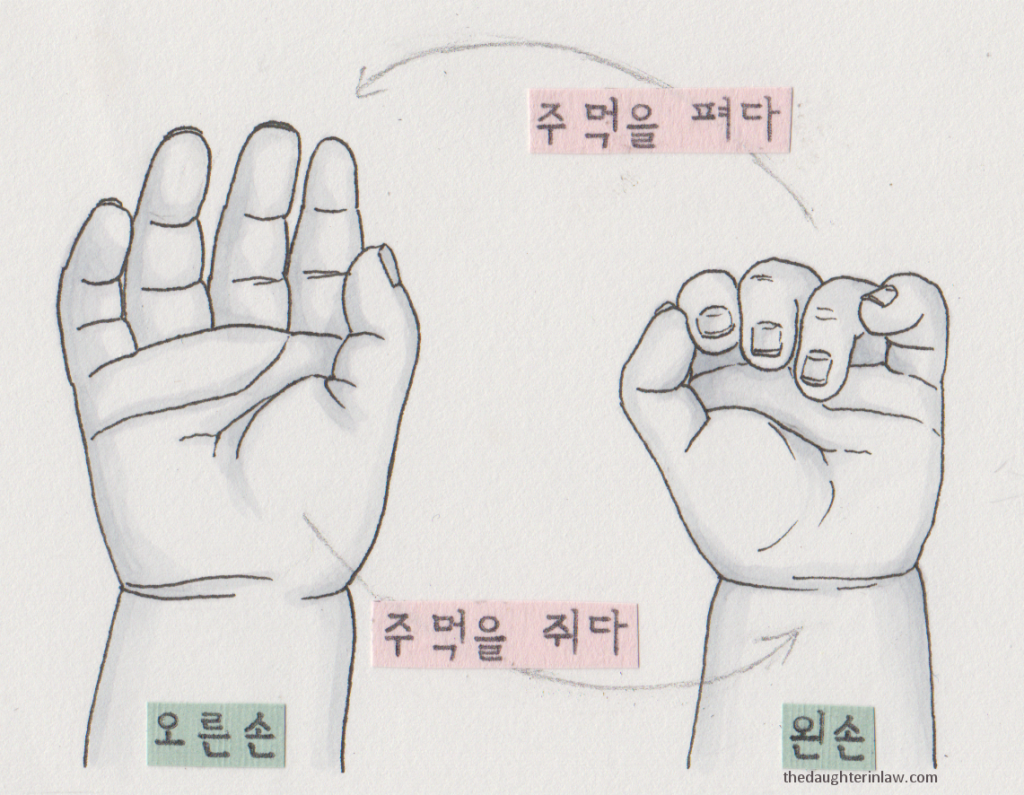

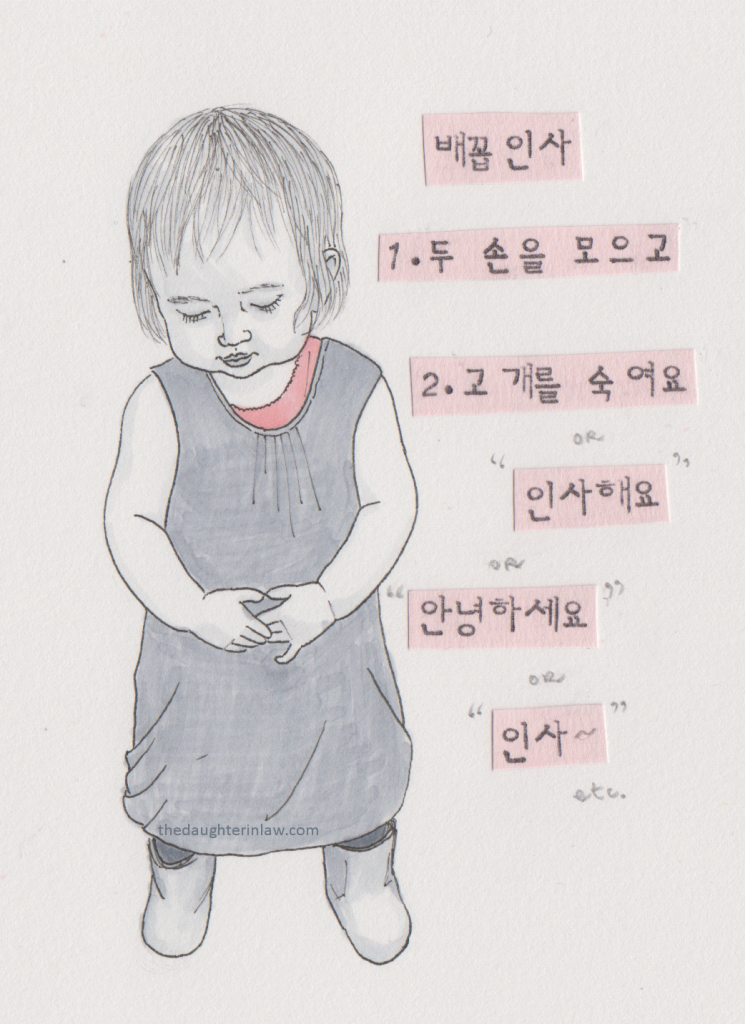 Since Alice is competent at bowing her head to greet and thank people, I recently taught her to “배꼽인사” (belly button bow)
Since Alice is competent at bowing her head to greet and thank people, I recently taught her to “배꼽인사” (belly button bow)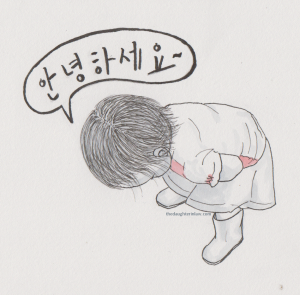

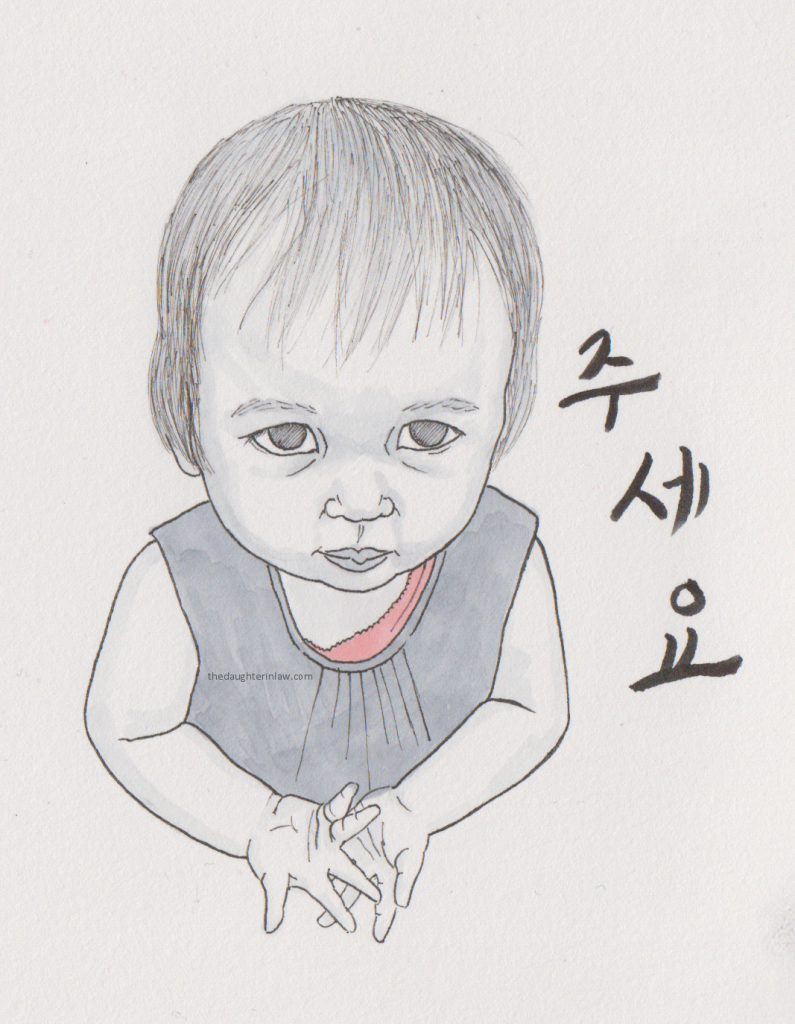 I’ve always felt that good manners are basically essential to getting along well with others in Korea. If I want my daughter to feel comfortable in Korean society as she grows up, teaching appropriate etiquette and manners is really important.
I’ve always felt that good manners are basically essential to getting along well with others in Korea. If I want my daughter to feel comfortable in Korean society as she grows up, teaching appropriate etiquette and manners is really important.
 If you are going to use 포대기, apply the same care and commonsense as when using any other baby carrier or mobility device. I am not an expert on infant physiology and don’t want any harm to come to your child. I’ve also read a few people’s accounts of becoming bow legged from being carried excessively in a 포대기 as an infant. I don’t know whether studies have been done on this, but again, use it carefully and in moderation.
If you are going to use 포대기, apply the same care and commonsense as when using any other baby carrier or mobility device. I am not an expert on infant physiology and don’t want any harm to come to your child. I’ve also read a few people’s accounts of becoming bow legged from being carried excessively in a 포대기 as an infant. I don’t know whether studies have been done on this, but again, use it carefully and in moderation.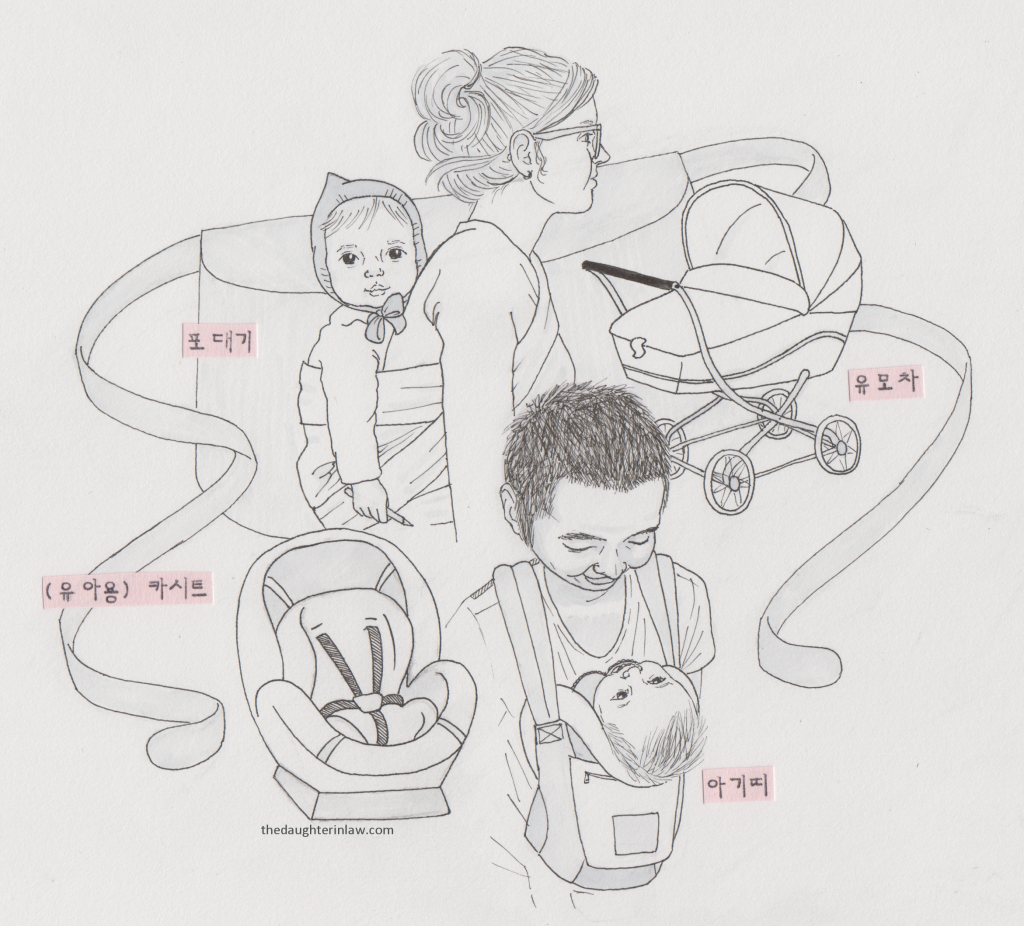

 Notes:
Notes: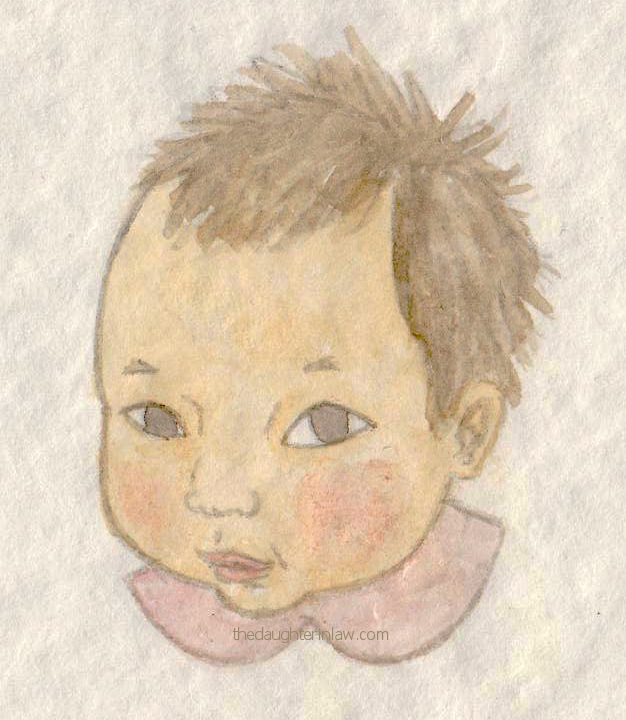 If you do not use Korean very much in your every day life, it is unlikely that you will be able to immediately chatter away in Korean to your new baby. I have been speaking to Alice in Korean since her birth, but it was a gradual phase in, using Korean and English until 9 months, when I committed to using Korean with her at least 95% of the time (you have to take into account that friends and relatives and strangers will use the community language and sometimes it will seem more appropriate to use a little of that language in such situations.)
If you do not use Korean very much in your every day life, it is unlikely that you will be able to immediately chatter away in Korean to your new baby. I have been speaking to Alice in Korean since her birth, but it was a gradual phase in, using Korean and English until 9 months, when I committed to using Korean with her at least 95% of the time (you have to take into account that friends and relatives and strangers will use the community language and sometimes it will seem more appropriate to use a little of that language in such situations.)